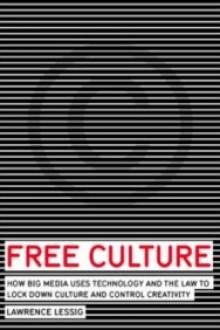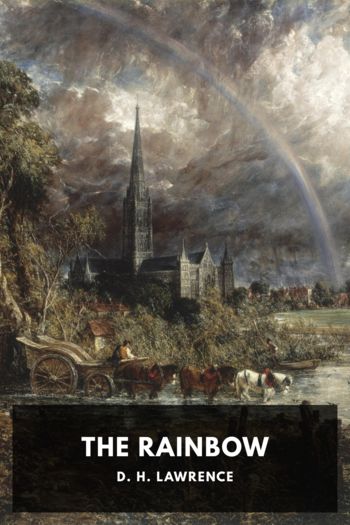Free Culture by Lawrence Lessig (short story to read .TXT) 📕

- Author: Lawrence Lessig
- Performer: 0143034650
Book online «Free Culture by Lawrence Lessig (short story to read .TXT) 📕». Author Lawrence Lessig
7. The term intellectual property is of relatively recent origin. See Siva Vaidhyanathan, Copyrights and Copywrongs, 11 (New York: New York University Press, 2001). See also Lawrence Lessig, The Future of Ideas (New York: Random House, 2001), 293 n. 26. The term accurately describes a set of "property" rights--copyright, patents, trademark, and trade-secret--but the nature of those rights is very different.
CHAPTER TWO: "MERE COPYISTS"
1. Reese V. Jenkins, Images and Enterprise (Baltimore: Johns Hopkins University Press, 1975), 112.
2. Brian Coe, The Birth of Photography (New York: Taplinger Publishing, 1977), 53.
3. Jenkins, 177.
4. Based on a chart in Jenkins, p. 178.
5. Coe, 58.
6. For illustrative cases, see, for example, Pavesich v. N.E. Life Ins. Co., 50 S.E. 68 (Ga. 1905); Foster-Milburn Co. v. Chinn, 123090 S.W. 364, 366 (Ky. 1909); Corliss v. Walker, 64 F. 280 (Mass. Dist. Ct. 1894).
7. Samuel D. Warren and Louis D. Brandeis, "The Right to Privacy," Harvard Law Review 4 (1890): 193.
8. See Melville B. Nimmer, "The Right of Publicity," Law and Contemporary Problems 19 (1954): 203; William L. Prosser, "Privacy," California Law Review 48 (1960) 398-407; White v. Samsung Electronics America, Inc., 971 F. 2d 1395 (9th Cir. 1992), cert. denied, 508 U.S. 951 (1993).
9. H. Edward Goldberg, "Essential Presentation Tools: Hardware and Software You Need to Create Digital Multimedia Presentations," cadalyst, 1 February 2002, available at link #7.
10. Judith Van Evra, Television and Child Development (Hillsdale, N.J.: Lawrence Erlbaum Associates, 1990); "Findings on Family and TV Study," Denver Post, 25 May 1997, B6.
11. Interview with Elizabeth Daley and Stephanie Barish, 13 December 2002.
12. See Scott Steinberg, "Crichton Gets Medieval on PCs," E!online, 4 November 2000, available at link #8; "Timeline," 22 November 2000, available at link #9.
13. Interview with Daley and Barish.
14. Ibid.
15. See, for example, Alexis de Tocqueville, Democracy in America, bk. 1, trans. Henry Reeve (New York: Bantam Books, 2000), ch. 16.
16. Bruce Ackerman and James Fishkin, "Deliberation Day," Journal of Political Philosophy 10 (2) (2002): 129.
17. Cass Sunstein, Republic.com (Princeton: Princeton University Press, 2001), 65-80, 175, 182, 183, 192.
18. Noah Shachtman, "With Incessant Postings, a Pundit Stirs the Pot," New York Times, 16 January 2003, G5.
19. Telephone interview with David Winer, 16 April 2003.
20. John Schwartz, "Loss of the Shuttle: The Internet; A Wealth of Information Online," New York Times, 2 February 2003, A28; Staci D. Kramer, "Shuttle Disaster Coverage Mixed, but Strong Overall," Online Journalism Review, 2 February 2003, available at link #10.
21. See Michael Falcone, "Does an Editor's Pencil Ruin a Web Log?" New York Times, 29 September 2003, C4. ("Not all news organizations have been as accepting of employees who blog. Kevin Sites, a CNN correspondent in Iraq who started a blog about his reporting of the war on March 9, stopped posting 12 days later at his bosses' request. Last year Steve Olaf- son, a Houston Chronicle reporter, was fired for keeping a personal Web log, published under a pseudonym, that dealt with some of the issues and people he was covering.")
22. See, for example, Edward Felten and Andrew Appel, "Technological Access Control Interferes with Noninfringing Scholarship," Communications of the Association for Computer Machinery 43 (2000): 9.
CHAPTER THREE: CATALOGS
1. Tim Goral, "Recording Industry Goes After Campus P-2-P Networks: Suit Alleges $97.8 Billion in Damages," Professional Media Group LCC 6 (2003): 5, available at 2003 WL 55179443.
2. Occupational Employment Survey, U.S. Dept. of Labor (2001) (27-2042--Musicians and Singers). See also National Endowment for the Arts, More Than One in a Blue Moon (2000).
3. Douglas Lichtman makes a related point in "KaZaA and Punishment," Wall Street Journal, 10 September 2003, A24.
CHAPTER FOUR: "PIRATES"
1. I am grateful to Peter DiMauro for pointing me to this extraordinary history. See also Siva Vaidhyanathan, Copyrights and Copywrongs, 87-93, which details Edison's "adventures" with copyright and patent.
2. J. A. Aberdeen, Hollywood Renegades: The Society of Independent Motion Picture Producers (Cobblestone Entertainment, 2000) and expanded texts posted at "The Edison Movie Monopoly: The Motion Picture Patents Company vs. the Independent Outlaws," available at link #11. For a discussion of the economic motive behind both these limits and the limits imposed by Victor on phonographs, see Randal C. Picker, "From Edison to the Broadcast Flag: Mechanisms of Consent and Refusal and the Prop- ertization of Copyright" (September 2002), University of Chicago Law School, James M. Olin Program in Law and Economics, Working Paper No. 159.
3. Marc Wanamaker, "The First Studios," The Silents Majority, archived at link #12.
4. To Amend and Consolidate the Acts Respecting Copyright: Hearings on S. 6330 and H.R. 19853 Before the ( Joint) Committees on Patents, 59th Cong. 59, 1st sess. (1906) (statement of Senator Alfred B. Kittredge, of South Dakota, chairman), reprinted in Legislative History of the 1909 Copyright Act, E. Fulton Brylawski and Abe Goldman, eds. (South Hack- ensack, N.J.: Rothman Reprints, 1976).
5. To Amend and Consolidate the Acts Respecting Copyright, 223 (statement of Nathan Burkan, attorney for the Music Publishers Association).
6. To Amend and Consolidate the Acts Respecting Copyright, 226 (statement of Nathan Burkan, attorney for the Music Publishers Association).
7. To Amend and Consolidate the Acts Respecting Copyright, 23 (statement of John Philip Sousa, composer).
8. To Amend and Consolidate the Acts Respecting Copyright, 283-84 (statement of Albert Walker, representative of the Auto-Music Perforating Company of New York).
9. To Amend and Consolidate the Acts Respecting Copyright, 376 (prepared memorandum of Philip Mauro, general patent counsel of the American Graphophone Company Association).
10. Copyright Law Revision: Hearings on S. 2499, S. 2900, H.R. 243, and H.R. 11794 Before the ( Joint) Committee on Patents, 60th Cong., 1st sess., 217 (1908) (statement of Senator Reed Smoot, chairman), reprinted in Legislative History of the 1909 Copyright Act, E. Fulton Brylawski and Abe Goldman, eds. (South Hackensack, N.J.: Rothman Reprints, 1976).
11. Copyright Law Revision: Report to Accompany H.R. 2512, House Committee on the Judiciary, 90th Cong., 1st sess., House Document no. 83, 66 (8 March 1967). I am grateful to Glenn Brown for drawing my attention to this report.
12. See 17 United States Code, sections 106 and 110. At the beginning, record companies printed "Not Licensed for Radio Broadcast" and other messages purporting to restrict the ability to play a record on a radio station. Judge Learned Hand rejected the argument that a warning attached to a record might restrict the rights of the radio station. See RCA Manufacturing Co. v. Whiteman, 114 F. 2d 86 (2nd Cir. 1940). See also Randal C. Picker, "From Edison to the Broadcast Flag: Mechanisms of Consent and Refusal and the Propertization of Copyright," University of Chicago Law Review 70 (2003): 281.
13. Copyright Law Revision--CATV: Hearing on S. 1006 Before the Subcommittee on Patents, Trademarks, and Copyrights of the Senate Committee on the Judiciary, 89th Cong., 2nd sess., 78 (1966) (statement of Rosel H. Hyde, chairman of the Federal Communications Commission).
14. Copyright Law Revision--CATV, 116 (statement of Douglas A. Anello, general counsel of the National Association of Broadcasters).
15. Copyright Law Revision--CATV, 126 (statement of Ernest W. Jennes, general counsel of the Association of Maximum Service Telecasters, Inc.).
16. Copyright Law Revision--CATV, 169 (joint statement of Arthur B. Krim, president of United Artists Corp., and John Sinn, president of United Artists Television, Inc.).
17. Copyright Law Revision--CATV, 209 (statement of Charlton Heston, president of the Screen Actors Guild).
18. Copyright Law Revision--CATV, 216 (statement of Edwin M. Zimmerman, acting assistant attorney general).
19. See, for example, National Music Publisher's Association, The Engine of Free Expression: Copyright on the Internet--The Myth of Free Information, available at link #13. "The threat of piracy--the use of someone else's creative work without permission or compensation--has grown with the Internet."
CHAPTER FIVE: "PIRACY"
1. See IFPI (International Federation of the Phonographic Industry), The Recording Industry Commercial Piracy Report 2003, July 2003, available at link #14. See also Ben Hunt, "Companies Warned on Music Piracy Risk," Financial Times, 14 February 2003, 11.
2. See Peter Drahos with John Braithwaite, Information Feudalism: Who Owns the Knowledge Economy? (New York: The New Press, 2003), 10-13, 209. The Trade-Related Aspects of Intellectual Property Rights (TRIPS) agreement obligates member nations to create administrative and enforcement mechanisms for intellectual property rights, a costly proposition for developing countries. Additionally, patent rights may lead to higher prices for staple industries such as agriculture. Critics of TRIPS question the disparity between burdens imposed upon developing countries and benefits conferred to industrialized nations. TRIPS does permit governments to use patents for public, noncommercial uses without first obtaining the patent holder's permission. Developing nations may be able to use this to gain the benefits of foreign patents at lower prices. This is a promising strategy for developing nations within the TRIPS framework.
3. For an analysis of the economic impact of copying technology, see Stan Liebowitz, Rethinking the Network Economy (New York: Amacom, 2002), 144-90. "In some instances . . . the impact of piracy on the copyright holder's ability to appropriate the value of the work will be negligible. One obvious instance is the case where the individual engaging in pirating would not have purchased an original even if pirating were not an option." Ibid., 149.
4. Bach v. Longman, 98 Eng. Rep. 1274 (1777).
5. See Clayton M. Christensen, The Innovator's Dilemma: The Revolutionary National Bestseller That Changed the Way We Do Business (New York: HarperBusiness, 2000). Professor Christensen examines why companies that give rise to and dominate a product area are frequently unable to come up with the most creative, paradigm-shifting uses for their own products. This job usually falls to outside innovators, who reassemble existing technology in inventive ways. For a discussion of Christensen's ideas, see Lawrence Lessig, Future, 89-92, 139.
6. See Carolyn Lochhead, "Silicon Valley Dream, Hollywood Nightmare," San Francisco Chronicle, 24 September 2002, A1; "Rock 'n' Roll Suicide," New Scientist, 6 July 2002, 42; Benny Evangelista, "Napster Names CEO, Secures New Financing," San Francisco Chronicle, 23 May 2003, C1; "Napster's Wake-Up Call," Economist, 24 June 2000, 23; John Naughton, "Hollywood at War with the Internet" (London) Times, 26 July 2002, 18.
7. See Ipsos-Insight, TEMPO: Keeping Pace with Online Music Distribution (September 2002), reporting that 28 percent of Americans aged twelve and older have downloaded music off of the Internet and 30 percent have listened to digital music files stored on their computers.
8. Amy Harmon, "Industry Offers a Carrot in Online Music Fight," New York Times, 6 June 2003, A1.
9. See Liebowitz, Rethinking the Network Economy,148-49.
10. See Cap Gemini Ernst & Young, Technology Evolution and the Music Industry's Business Model Crisis (2003), 3. This report describes the music industry's effort to stigmatize the budding practice of cassette taping in the 1970s, including an advertising campaign featuring a cassette-shape skull and the caption "Home taping is killing music."
At the time digital audio tape became a threat, the Office of Technical Assessment conducted a survey of consumer behavior. In 1988, 40 percent of consumers older than ten had taped music to a cassette format. U.S. Congress, Office of Technology Assessment, Copyright and Home Copying:





Comments (0)